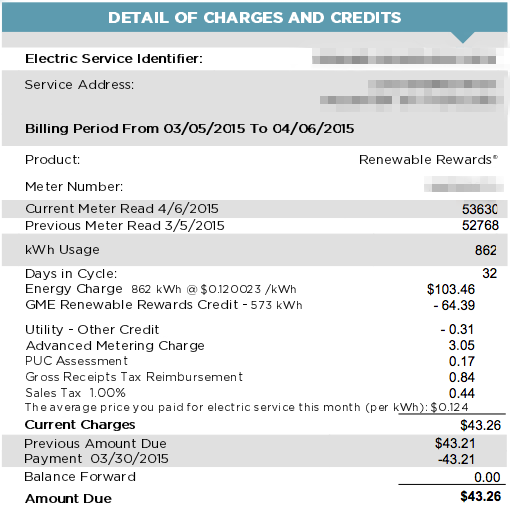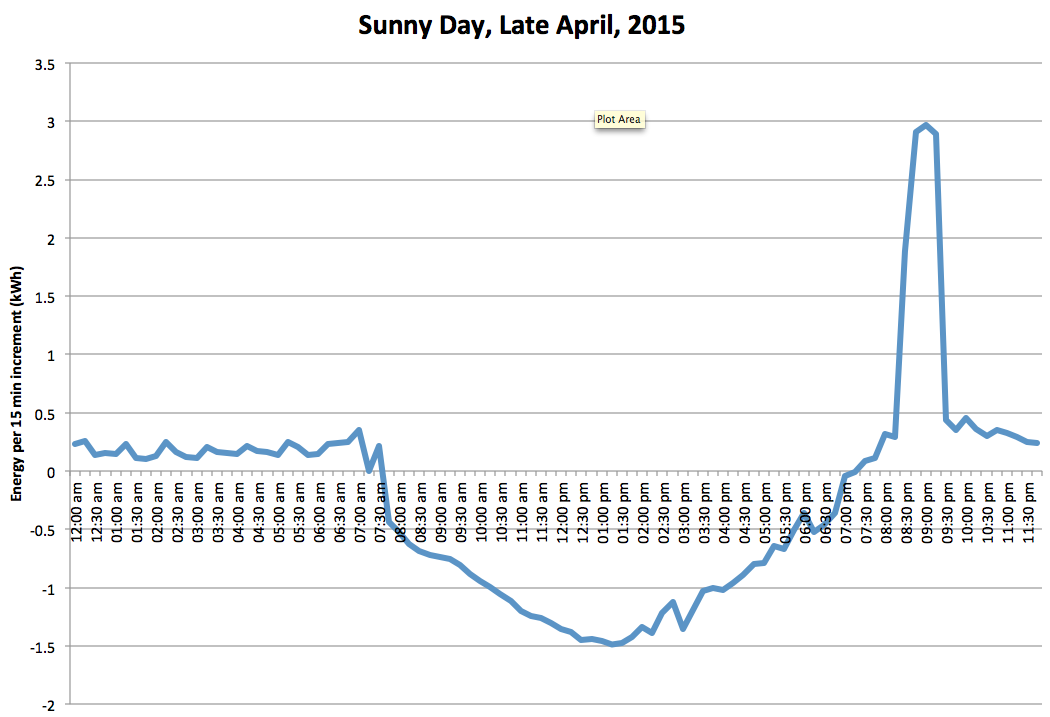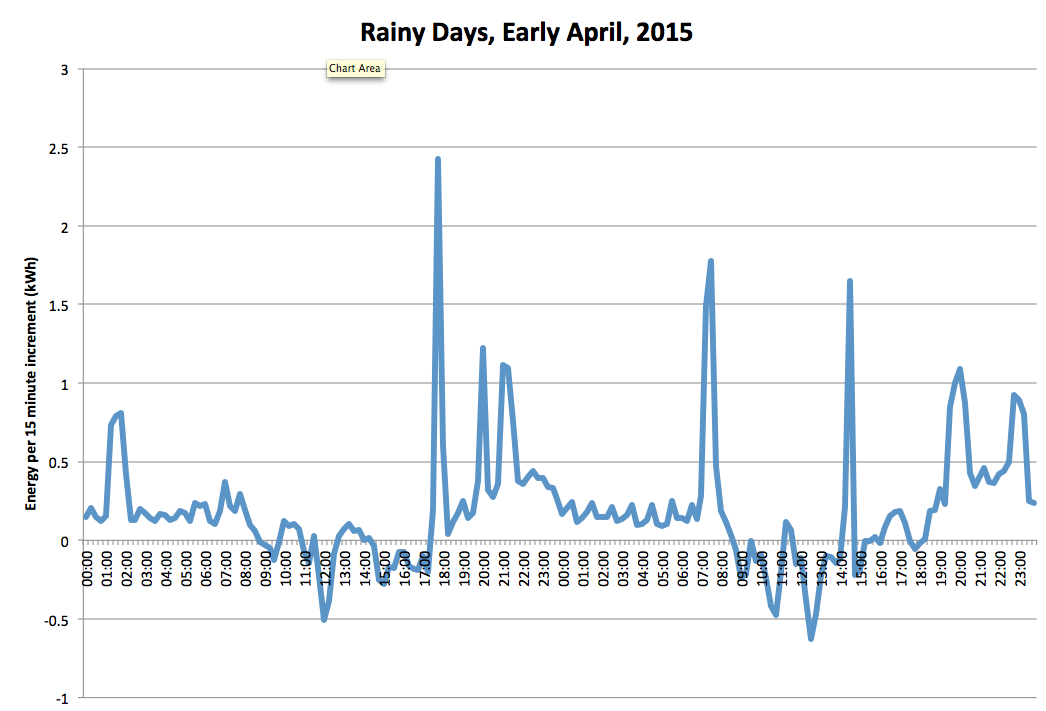Note: From time to time, I solicit guest posts from various individuals on different topics. While I like to think I know a little something about a lot of things, I’m fortunate to be acquainted with a number of people who know a whole lot about certain topics, and who are willing to share some of that knowledge here. In this particular case, I’m welcoming back someone who has written on this particular topic before.
I’ve been blogging about our electricity situation for the past few years here at OffTheKuff. In 2014, I mentioned that we were pondering going with a solar system. Well, we did it — a 9 kW (peak) solar system via Texas Solar Outfitters — and we also picked up a Tesla Model S. This is less about being green hippie freaks and more about disconnecting from what I’ve viewed as a deeply dysfunctional electricity market. (And also having a car that kicks ass, but that’s for another day and a different blog.)
We’ve only had the solar system since November, so it’s too soon to have full-year statistics. Once the system reaches its first full year anniversary, I’ll run the “profitability” numbers and do another guest post here. Stay tuned for more exciting charts and financial math (present value, IRR, and more)! Instead, I wanted to give some perspective on the economics of solar power.
Notably, Tesla just announced a new “PowerWall” contraption that puts a 10kWh battery pack on your garage wall for $3500 (plus hiring an electrician, plus permitting, plus ancillary equipment like inverters, so let’s call it $6000 minimum). Elon Musk envisions that we can truly replace our entirely fossil fuel-based economy with solar power: homes, cars, everything. (For more technical details on the PowerWall products, Teslarati has a good writeup.) Let’s do the numbers, shall we?
To begin, here’s our March electrical bill from Green Mountain — the best of the three available plans if you have solar.
This is what “net metering” looks like. We drew 862kWh from the grid and fed back 573kWh. Meanwhile, over the same time period, our solar system reports that it produced 853kWh. Of this, the house consumed 280kWh and we sold back the remaining 573kWh. So, our actual power consumption for March was 1142kWh (solar generation plus grid consumption, minus excesses solar generation sold back).
I rolled back to last year’s stats, when we had neither solar nor a Tesla, and the monthly usage for the same time period was 864kWh, which says that the Tesla used around 280kWh for the month, or maybe it’s just hotter this year. Last year’s awful summer peaks were well north of 1500kWh, so presumably this summer, with the Tesla, we’re looking at 1800-2000kWh / month of peak usage.
(With our Tesla, we’re on target to hit about 7500 miles/year, so these numbers may represent a “low” usage point relative to others, but you can easily scale our numbers up if you want to predict your own hypothetical costs. Your mileage and the weather may vary, etc.)
Here’s where solar gets fun. The graph below shows the energy generated by our solar system on a beautiful, sunny April day. Positive numbers represent power we’re drawing from the grid. Negative numbers represent excess power we’re selling back to the grid. You can see our Tesla charging itself up after we got home from eating dinner out. You can also nicely see when the sun came up and when it went down again. On this particular day, midnight to midnight, we drew 20kWh from the grid while the sun was down. The solar system generated 52kWh, and we had an excess of 44kWh that we sold back to the grid (i.e., we consumed a total of 28kWh on this particular day and were a net seller of electricity). Sounds great right?
The new Tesla PowerWall contraption leads you to ask the question of whether you could store all that extra energy in a battery during the day and release it at night. If you could do that, you could then cut yourself free from the grid. Today’s question: what would it take to go completely “off grid”?
To pull this off, you need to generate everything you might ever need, even in the worst case. So how bad is bad? Here’s a chart of our power usage over a two day period in early April when it was rainy and awful.
Over these two days, our total power drawn from the grid was 46kWh. The solar system generated 25.2kWh, of which 9kWh was sold back to the grid (i.e., we consumed an average of 31kWh/day on these two days). To make this work “off grid”, we’d need to double the size of our solar system. To make this work on a bad weather winter day, with correspondingly less daylight, the solar system would need to grow yet again. Also, this included a typical day of driving with our Tesla. What if we did a long drive and got home with a near-empty battery? You’d have a whole new form of range anxiety to deal with. Conversely, on days when you generate more than you use you’re just throwing it away.
Our current solar system cost us roughly $30k to purchase and install (before the 30% tax credit, which might go down in future years). No matter how you slice it, the profitability of the system is dubious, given how much cheaper electricity became after the Saudis decided to crank up their production. Doubling the solar system, installing expensive batteries, going off-grid, and discarding excess production? Sorry, that’s not financially rational.
Incidentally, if you want to know how to size up a Tesla PowerWall system for an off-grid solar application, you pretty much just add up your grid consumption during the night; you need to ensure you have enough solar capacity and battery capacity during the day to cover it. For our house, two PowerWall batteries ($3500/ea, for 20kWh total storage capacity) wouldn’t quite do the job. We’d need three of them to have a decent margin. If you had a bigger house or you drove many more miles on your electric car, then you’d have to ratchet everything up appropriately.
Conclusion 1: building a solar system to deal with worst-case power generation, operating your house “off grid”, will require your solar system to be much larger than you’d specify for a net-metering application, where you can rely on the grid for bad-weather days. As solar panels get more powerful and cheaper, the economics of this will change. Today, no. Ten years, maybe.
Next question for today: is there any point in buying a PowerWall if not to go off-grid? If what you want is “emergency” service in a power-outage situation, you can buy all sorts of natural gas generators. They’re loud when running and they require regular service, but after Hurricane Ike knocked our power out for ten days, we could feel the soulful allure. Unfortunately, a smaller PowerWall system wouldn’t help here, since for a ten day blackout, you’re really in a situation equivalent to the fully off-grid scenario.
Sadly, with only flat-rate grid electricity pricing available here, I conclude that a PowerWall has no real use at our home.
Caveat 1: so long as TXU is willing to give you “free nights”, then a PowerWall means free electricity for your home! You can expect TXU to kill that program off quickly once Tesla’s battery packs start shipping. Sorry about that.
Caveat 2: electric utilities are cranking up the scare machine that it’s “unfair” for solar consumers to pay less for the grid. First off, this is totally bogus, as we pay the same fixed fee as everybody else pays for CenterPoint to maintain the grid. (Many retail electric plans hide this fee, so long as you use more than 1000kWh, but they’re still paying it on your behalf. ) And if you’re a net provider rather than net consumer of power at peak times, you’re helping the grid. But let’s say the utilities win the argument and kill off or weaken solar net metering. At that point, we’re forced to buy a battery storage system to recapture our excess daytime usage. The grid then loses the benefit of our excess generation, and every new solar system just got more expensive for no good reason.
All of this would change if consumers were more exposed to the variable pricing of the commercial power market. Rice University, for example, buys its electricity a full year ahead of time, hour by hour, offset by in-house solar production. If it turns out that Rice pre-bought more than they need, they sell it back on the spot market. If they need more than they pre-bought, they have to go buy power on that same spot market. And, of course, when do they really need it? The same time as everybody else does, on the hottest days, so spot prices can be brutal. With this in mind, typical commercial flat rooftop solar installations point their panels southwest, maximizing their power generation in the afternoon when electricity is most expensive.
The real genius of power storage systems is that you can buy and store the power when it’s cheap and uses it when it’s expensive. Energy arbitrage! That means that the mammoth version of Tesla’s PowerWall might be very attractive for industrial and commercial users. Even utilities might deploy them into neighborhoods. And if home users were more exposed to the “real” pricing in the commercial market, they too would be incentivized to get personal battery storage systems, with or without solar, for the same reasons. So far as I can tell, none of the available-in-Houston 325 plans from the 52 different retail electric providers offer hour-by-hour variable pricing like this, but in Austin or San Antonio, your traditional electric utility might be able to do it. Here’s a nice NPR article with useful details.
Conclusion 2: so long as consumers have net metering available and are not exposed to variable time-of-day electricity pricing, they won’t be incentivized to buy a battery storage system, with or without a solar system on the roof. There’s really no benefit for Houston consumers today to buy a storage system.
Teslarati runs a similar analysis in a state with variable pricing. In Southern California, the PowerWall becomes profitable in 3-5 years, and is unattractive for off-grid. Also, Vermont’s Green Mountain Power, not to be confused with our NRG-owned Green Mountain Energy, is ramping up some kind of joint program with Tesla. Who knows, maybe we’ll see something like it here some day.
One parting thought: in the insane, fragmented universe of the deregulated Texas electricity market, where generation, distribution, and retail sales are performed by unrelated players, we’ll probably be stuck with pricing policies that incentivize consumers to waste energy for make benefit most glorious State of Texas. Of course, exposing consumers to the raw industrial electricity market would likely be disastrous. Consumers can’t easily manage their load or trade contracts against future use. The best we seem to get are “smart” thermostats that can throttle back at peak times. Yawn. What seems missing, then, is better regulations for how consumer pricing is structured to incentivize lower peak usage. My proposed solution? Net metering and predictable time-variable pricing should be a standard part of any retail electricity offering. Let me sell high and buy low! Similarly, every plan should be structured to eliminate perverse rate structures where marginal rates go down as usage goes up. That’s common sense. Deregulation!
Dan Wallach is a professor of computer science at Rice and a friend of mine who has written four of these analyses before.





Very nice write up, Kuff. That answers a lot of questions that typically don’t get answered in articles about solar. You’ve given a real world description, easily understood. Thanks!
Thank you Professor Wallach for the thoughtful article. My concerns with solar are two fold, the real cost of subsidies and even with them, the length of time to recoup the investment (even without investment costs) for an individual. Even as someone that doesn’t pay $30k/year in federal income taxes for the existing offset to work best (we appear to have similar energy consumption habits), doesn’t that money given to those well off enough or the much larger amounts for businesses to go solar realistically come from those less able to take advantage of the credits? It’s not like the feds are spending less than they make after all.
Otherwise, on a purely economic model (which you alluded to writing about in the near future, though mentioning in a general manner above), even with the subsidy, paying ~$21k to save $65/month or so seems like it would take 25 years to pay off even without any consideration for the loss of investment potential. I experienced this on a smaller scale when I changed to a tankless water heater years ago.
I remember the two questions coming up repeatedly in some of the programming from The Green Channel (RIP) some years back, rich people like actor Larry Hagman (also RIP) able to get a 30% credit from the feds, another big chunk from the state of California, and then another chunk from his energy provider (I don’t recall if his county and/or city chipped in as well) to where his out of pocket costs were covered over 50%. The possibility that home systems cause damage to the grid is a new wrinkle, an admittedly conveniently timed wrinkle, to factor in as well (if true, those “same fees as everyone else” might need to be adjusted for those causing problems).
How long does it take to recoup the cost is a major question as pointed out Houston above. If the object is to save money that is the primary concern, if the object is to be a good earth inhabitant then is of minor concern.
Not too long ago, AC was not available and dryers were wires in the backyard. Those are much more economical ways to save money and be a good earth protector. One could recycle washing machine water to the yard/plants.
Good article I enjoyed reading it.
I promise I’ll write about long-term costs and profitability around the end of the year once I’ve got a solid year of data. Right now, among other things, I have no idea how much power my system will generate at the peak of summer (longer days).
With respect to “impact” on the grid, suffice to say that it’s at worst unclear and most likely the case that solar net metering is a net benefit to the grid, because it provides extra power at exactly the times of peak demand. My solar helps prevent your brownout. That sort of thing makes it harder to decide whether it’s good or bad for tax subsidies. Ultimately, we can have a productive discussion on grid engineering. We’ll just have unproductive arguments if we get mired in public policy questions.
Dan,
One question I have as yet unanswered is, how did the solar installation effect your homeowner’s insurance rates? Also, how does this set up effect the longevity of your roof?
My insurance indeed went up, but it was one of those “hey let’s reevaluate your coverage on ten other things while we’re at it”, including the contemporaneous upgrade from a ten year old Acura to the shiny new (used) Tesla. Because it’s all one big multi-line policy, it’s hard to break out one thing vs another.
My understanding of roofs is that you generally speaking don’t want to mount a shiny new solar system on an ancient failing roof. First you fix the roof,which you should have done anyway.